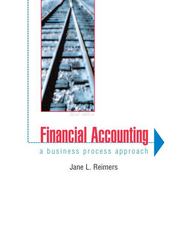Question
Few past exams from Corporate Finance 1.Are the following statements true or false or maybe? Explain. If you get the answer wrong, but your explanation
Few past exams from Corporate Finance
1.Are the following statements true or false or maybe? Explain. If you get the answer wrong, but your explanation seems to suggest that you understand the main point, you can get partial credit.
(20) In the real world, managers can consider investment and financing decisions separately.
(21) Managers experience the influence of M&M violations (other than corporate income taxes) through the costs of capital of debt and equity that they face.
(22) A positive average rate of return over a few years means that your portfolio has made money.
(23) Can it happen that firms cannot take positive-NPV projects in the future if they have debt?
(24) Can it happen that firms cannot take negative-NPV projects in the future if they have debt?
(25) Assume that a firm that is worth $20B will get into financial distress if it has debt and the enterprise value falls below $2B. The probability if this happening is 10%. If it does, customers will flee, which will cost it 5% of its business. In counterbalancing the benefits of debt, should the firm use 5% as its expected cost of bankruptcy that today?
(26) The presence of debt can, on the margin, reduce firm value when it increase (managers and owners) moral hazard.
(27) The presence of debt can, on the margin,reduce firm value by increasing debthangover issues.
(28) The presence of debt can, on the margin, increase firm value by increasing hold-up concerns.
(29) The presence of equity can, on the margin, often increase firm value by reducing the relative personal income taxes your funders have to provide.
(30) The cost of debt is its quoted interest rate.
(31) Most pro-formas use the CAPM as the cost of capital even though there is very little scientific evidence to support the use of the CAPM for such purposes.
2. A firm that costs $100 today will be worth (next year) either $50, $100, or $150, with probabilities 1/3, 1/3, and 1/3, respectively. Although the firm has an overall average cost of capital of 33.33%, it expects to pay only an interest rate of 15% for a 1-year bond that raises $65 today. What is the promised payment on the bond? What is the expected rate of return on the equity if the firm is financed with this bond?
3. This is for one firm:
(1) A firm, about to be founded by a couple of pension funds, will have a 50% debt and 50%-equity capital structure. The firm expects to invest $1,200. It then expects to have operating income of $120 the following year, of which $40 will be paid out as interest payments and $60 (which is what is left over after having paid $20 in corporate income taxes) as a repurchase (or dividend). The firm then shuts down, returning the original $1,200 investment to its investors. The prevailing firm cost of capital is about 11% (and, for convenience, you can assume that all future cash flows can be discounted by this rate, regardless of whether it is tax-savings, firm-capital, etc.; in fact, when not inappropriate, the firm sometimes rounds its final results to the nearest half-dollar). Its tax rate is 25%. What is the firms current tax-shelter from interest?
(2) The firm considers moving to an 80% debt, 20%-equity capital structure. This will require the firm to pay an interest rate of about 10% rather than the 8% under its previous 50-50 capital structure. Do a Flow-To-Equity calculation of the value of the firm under this new capital structure.
(3) Do an APV calculation of firm value under the new capital structure.
(4) Do a WACC calculation analysis of firm value under the new capital structure, assuming that the equity cost of capital (expected rate of return) with such stratospheric debt shoots up to 25%. Hint: dont forget about the return to capital.
8. A firm that costs $100 today will be worth (next year) either $50, $100, or $150, with probabilities 1/3, 1/3, and 1/3, respectively. Although the firm has an overall average cost of capital of 33.33%, it expects to pay only an interest rate of 15% for a 1-year bond that raises $65 today. What is the promised payment on the bond? What is the expected rate of return on the equity if the firm is financed with this bond?
Step by Step Solution
There are 3 Steps involved in it
Step: 1

Get Instant Access to Expert-Tailored Solutions
See step-by-step solutions with expert insights and AI powered tools for academic success
Step: 2

Step: 3

Ace Your Homework with AI
Get the answers you need in no time with our AI-driven, step-by-step assistance
Get Started


